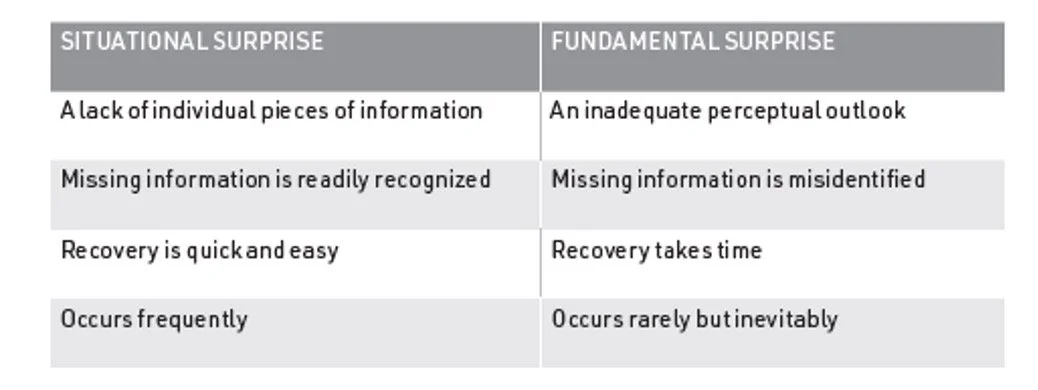In Chapter 3 the authors explain what it takes to create a sponsor, the role of the sponsor, creating a strategy for change, and distilling a compelling vision for the organization.
Episode Book Images
Table comparing situational surprise to fundamental surprise, adapted from Airpower’s Response to Fundamental Surprise, a Monograph by D. Elgersma, 2018, School of Advanced Military Studies US Army Command and General Staff College Fort Leavenworth, KS.
This table of suggested vocabulary enables organizations to integrate human and organizational performance principles and practices.
Episode Footnotes
A star wheel is a wheel with notches formed on the outer periphery that engage a vial and move it along a circular path to the next station.
As defined by David Woods, a founder of resilience engineering as an approach to safety in complex systems, the performance of a brittle system rapidly falls off or collapses when events push it beyond its boundaries for handling changing disturbances and variations.
DMAIC is a continuous improvement acronym for Define, Measure, Analyze, Improve, and Control. DMAIC is a data driven improvement cycle used for improving business processes.
For example, a person can have a mindset such as quality is a priority, but when faced with a job deadline, a lack of support, confusing HMI prompts, or ostracism for slowing down work to better manage the risks, these workplace factors influence or motivate behavior that may not align with their mindset. Thus, focusing on mindset alone, which may not need to be changed, may be insufficient to influence behavior as desired.
Lingchi, or death by a thousand cuts, was a form of torture and execution practiced in China where a knife was used to remove portions of the body over an extended period of time, eventually resulting in death. The phrase in modern times has come to mean a situation where many small undesirable things are happening, none of which are significantly impactful in themselves, but which add up to a slow change in thinking or a significant outcome.
Describing human error as an attribution, a judgement of a behavior based on an outcome, can be traced back to the 1983 NATO Conference on human error. Internationally recognized specialist in the fields of resilience engineering and system safety Erik Hollnagel stated that human error characterizes the outcome of an action rather than the cause.


